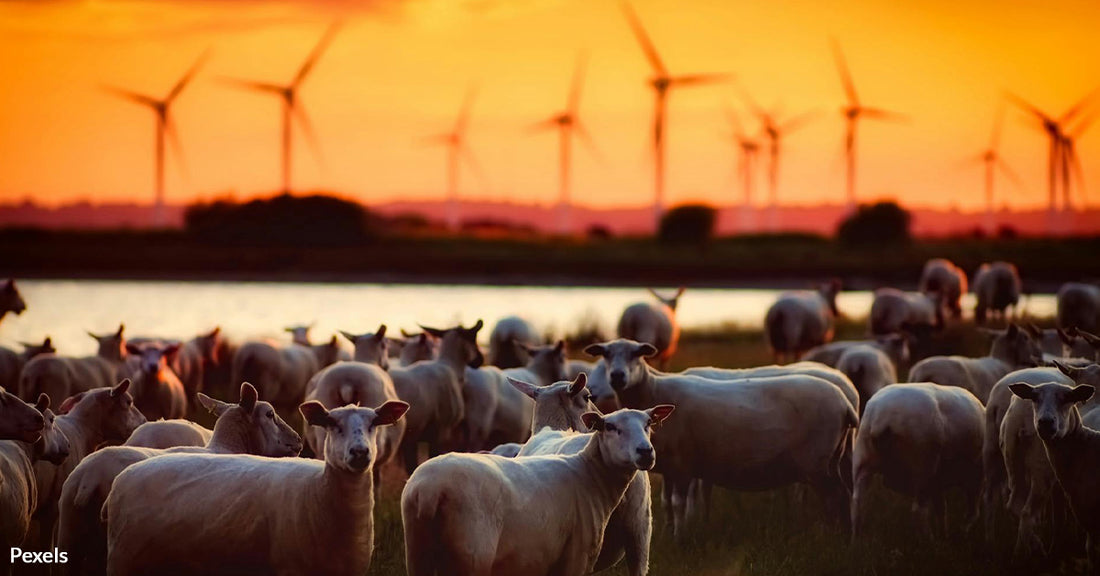Wind Turbines Killing Birds and Bats in Alarming Numbers
Matthew Russell
Wind farms, hailed as a cornerstone in the fight against climate change, present a paradox in their interaction with the natural world.
As these towering structures proliferate across landscapes and seascapes, their impact on wildlife has become a focal point of concern. The challenge lies in harnessing wind power while minimizing its unintended consequences on birds, bats, and marine life.

The Collision Conundrum
Wind turbines, with their massive spinning blades, are notorious for causing fatal collisions among birds and bats. Birds of prey, such as eagles and hawks, are particularly vulnerable as they soar through open spaces where wind farms are often situated. The speed of the blades creates a nearly invisible hazard, leading to thousands of bird deaths annually. In North America alone, it is estimated that wind turbines are responsible for the deaths of up to 328,000 birds each year, BBC Future reports.
Bats face a similarly grim fate. Unlike birds, which may collide with turbines by chance, bats appear to be attracted to these structures. The reasons remain speculative, but some researchers suggest that bats might mistake turbines for roosting sites or be drawn by the insects that gather around them. This attraction, coupled with their low reproductive rates, makes bats particularly susceptible to population declines. In Australia, for example, wind turbines are believed to kill tens of thousands of bats annually, according to Canary Media.

Habitat Disruption
Beyond direct collisions, wind farms can disrupt wildlife habitats. Large-scale wind projects often require significant land or sea area, which can displace animals from their natural habitats. For instance, as Phys.org reports, the installation of offshore wind turbines in the North Sea has raised concerns about its impact on marine life, including porpoises and seals.
The construction noise alone, particularly during pile driving, can impair the hearing of these animals, affecting their ability to hunt and communicate. On land, the creation of access roads and other infrastructure necessary for wind farms can fragment habitats, making it difficult for wildlife to access essential resources, BBC Future reports. For example, in Prince Edward Island, Canada, new wind farm developments threaten wetlands that serve as critical nesting sites for vulnerable bird species.

Innovative Solutions on the Horizon
Despite these challenges, there is a growing body of research dedicated to finding ways to mitigate the impact of wind farms on wildlife. One promising approach is the curtailment of turbine operations during periods of high wildlife activity. By pausing or slowing turbines during times when bats and birds are most active, particularly during low wind speeds at night, it is possible to significantly reduce the number of fatalities, Canary Media reports. This method has already shown success in several studies, with one wind farm in Pennsylvania reporting a reduction in bat deaths by up to 93%.
Another innovative solution involves using ultrasonic acoustic devices to deter bats from approaching turbines. These devices emit high-frequency sounds that are unpleasant to bats but inaudible to humans, effectively keeping them away from danger. Similarly, painting one of the turbine blades black to increase its visibility to birds has shown promise in reducing bird collisions, Canary Media reports. In Norway, this simple technique led to a 70% reduction in bird deaths at a test site.

Regulatory and Industry Collaboration
Addressing the impact of wind farms on wildlife requires not just technological innovation but also robust regulation and collaboration between the wind energy industry and conservationists. In some regions, regulations already mandate that wind farm developers conduct thorough environmental assessments before construction begins. These assessments help identify high-risk areas for wildlife and recommend alternative sites or mitigation strategies.
As Phys.org reports, in the Netherlands, wind farm operators are required to include ecological programs in their tender procedures, a policy that has helped boost research and collaboration with conservationists.
In the U.S., guidelines from the U.S. Fish and Wildlife Service provide a framework for minimizing the impact of wind farms on wildlife. These guidelines, which include best management practices for site selection and operation, are crucial for ensuring that the expansion of wind energy does not come at the expense of biodiversity, according to WINDExchange.

The Path Forward
The expansion of wind energy is essential for combating climate change, but it must be balanced with the need to protect wildlife. As the wind energy sector continues to grow, it is imperative that developers, regulators, and conservationists work together to implement solutions that minimize harm to animals.
With careful planning, innovative technologies, and a commitment to environmental stewardship, it is possible to make wind farms a win-win for both green energy and wildlife.
Click below to protect wildlife from unregulated wind turbine development.

